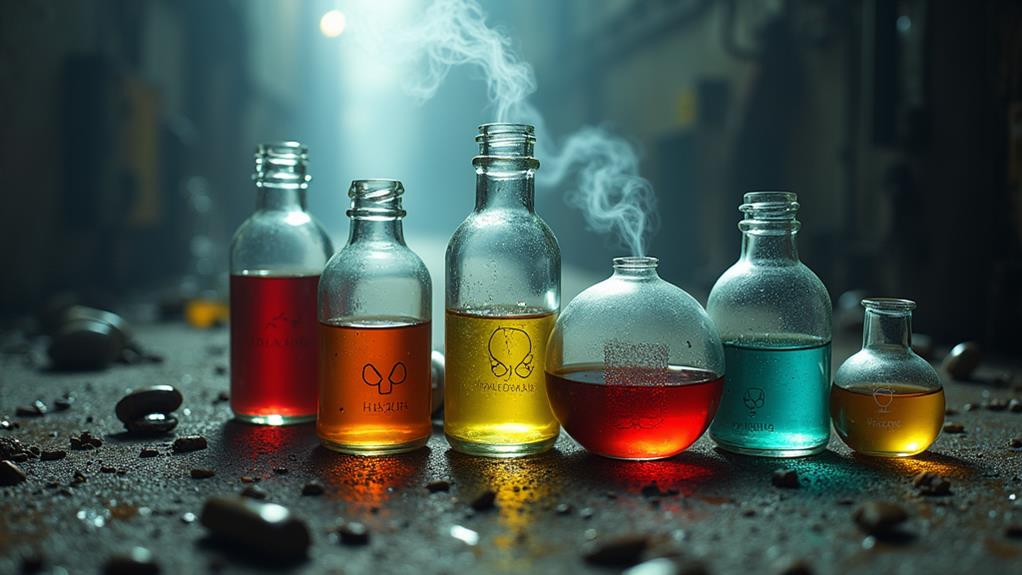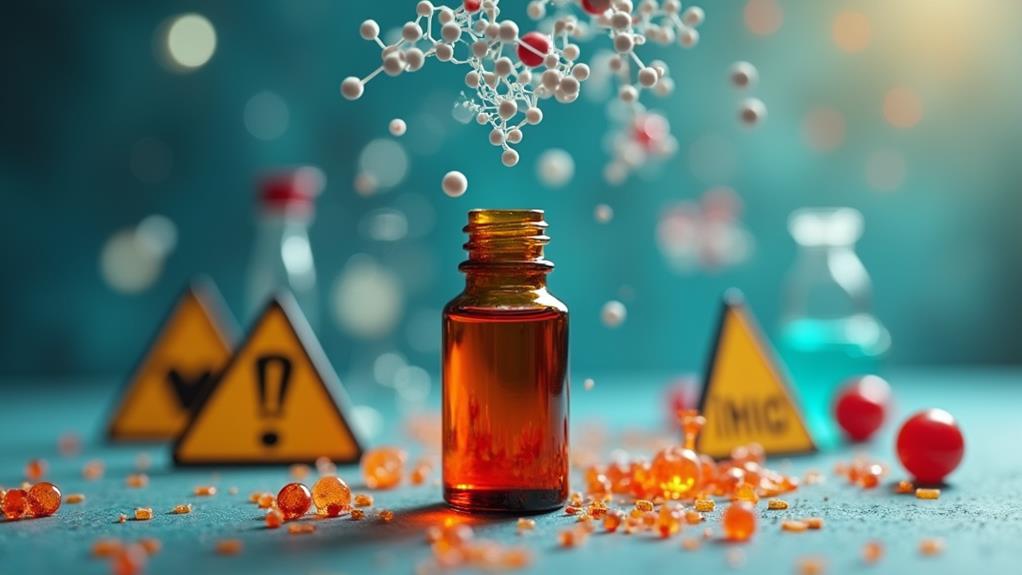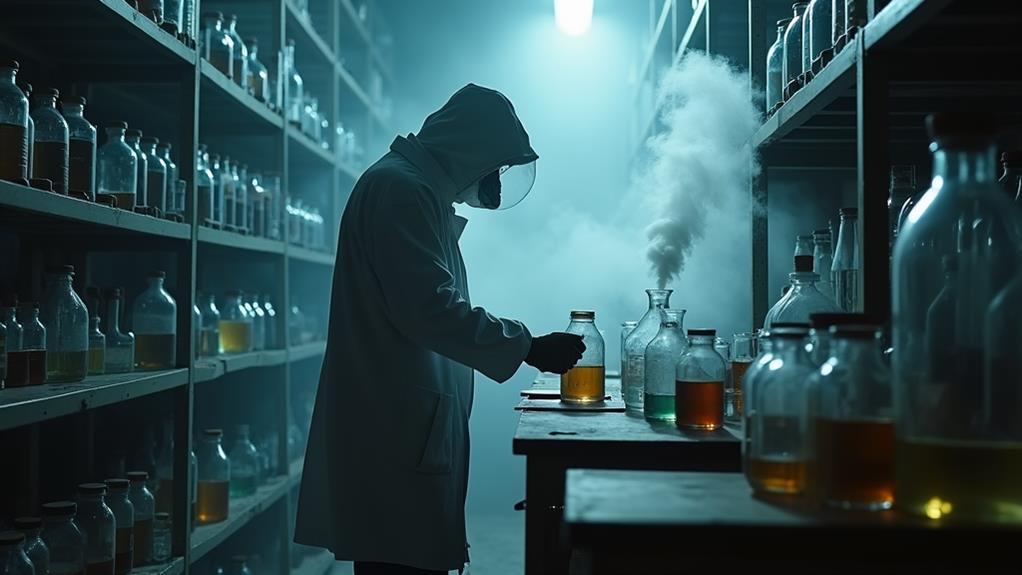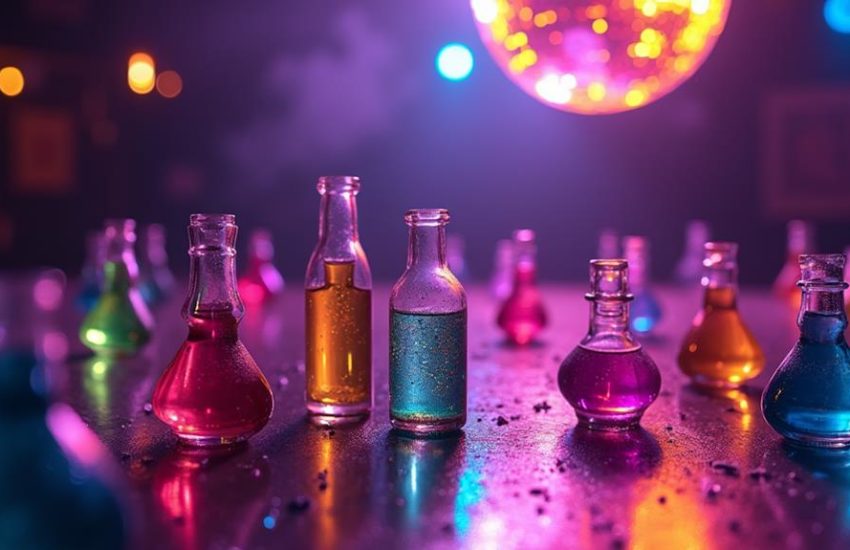Poppers Dirty Little Secrets: The Dangerous Chemicals Theyre Not Telling You About
Poppers contain harmful chemicals and impurities beyond their advertised ingredients. These include alkyl nitrates, heavy metals, and industrial-grade substances that pose serious health risks. Chronic use has been linked to irreversible brain damage, liver and kidney dysfunction, and respiratory issues. The unregulated production of poppers leads to uncertain chemical compositions, whereas misleading labeling obscures potential dangers. Users may experience neurological damage, cardiovascular problems, and psychological addiction. Legal loopholes allow poppers to evade regulations by being marketed as "room odorizers" or "leather cleaners." Understanding the full spectrum of risks associated with poppers is vital for informed decision-making.
Hidden Toxins in Poppers

Popper toxicity remains a significant concern for users and health professionals alike. In addition to poppers having a long history of recreational use, recent studies have uncovered alarming hidden toxins in these volatile nitrite compounds.
Chemical analysis reveals the presence of impurities like alkyl nitrates and heavy metals, which can lead to severe health complications. For instance, chronic use has been linked to irreversible brain damage, particularly in the cerebral cortex and cerebellum.
Furthermore, the unregulated nature of popper production means that users cannot be certain of the exact chemical composition of the products they consume, as misleading labeling is a common issue. User experiences often fail to account for these hidden dangers, as the immediate effects of poppers may overshadow long-term risks.
Research indicates that chronic exposure to these toxins can result in cumulative damage to the liver, kidneys, and central nervous system. Additionally, the unregulated nature of popper production means that users cannot be certain of the exact chemical composition of the products they consume.
This lack of transparency poses a significant threat to public health and highlights the need for increased awareness and regulation in the poppers market.
Health Risks of Inhalant Use

Health Risks of Inhalant Use
Inhalant use, including the consumption of poppers, carries significant health risks that extend beyond the immediate effects. The health implications of chronic inhalant use can be severe and long-lasting, affecting multiple organ systems.
Users may experience:
- Neurological damage, including cognitive impairment and memory loss
- Cardiovascular issues, such as irregular heartbeat and blood pressure fluctuations
- Respiratory problems, including chemical pneumonitis and lung damage
- Liver and kidney dysfunction
Reports of visual disturbances, such as popper maculopathy and eye floaters, have additionally been linked to popper use.
The addiction potential of inhalants should not be underestimated. Although physical dependence is less common, psychological addiction can develop rapidly, leading to compulsive use and increased tolerance.
Regular users may experience withdrawal symptoms upon cessation, including anxiety, depression, and cravings.
It's vital for individuals within the community to understand these risks and support one another in making informed decisions about inhalant use, prioritizing long-term health and well-being.
Chemical Composition Exposed

A closer examination of the chemical makeup of poppers reveals a complex and potentially harmful composition. The primary active ingredient in most poppers is alkyl nitrites, typically isobutyl nitrite or isopropyl nitrite. These compounds are highly volatile and can undergo rapid chemical reactions when exposed to air or heat.
The effects and health risks of poppers include severe issues such as methemoglobinemia and respiratory distress. The ingredient sourcing for poppers is often unclear, raising concerns about purity and potential contaminants. Manufacturers may use industrial-grade chemicals not intended for human consumption, introducing additional risks. Some poppers contain traces of heavy metals or other impurities from the production process.
The instability of alkyl nitrites can lead to the formation of harmful byproducts over time, even when stored properly. This chemical degradation may result in increased toxicity and unpredictable effects.
Understanding the true composition of poppers is essential for users to make informed decisions about their health and safety.
Legal Loopholes and Regulation

In spite of the potential health risks associated with their chemical composition, poppers remain widely available due to various legal loopholes and regulatory ambiguities. The industry exploits these gaps, presenting significant regulatory challenges and raising questions about industry accountability.
Key factors contributing to this situation include:
- Labeling poppers as "room odorizers" or "leather cleaners"
- Frequent reformulation to stay ahead of banned substances
- Inconsistent regulation across jurisdictions
- Limited enforcement resources for monitoring sales
These issues have made it difficult for authorities to effectively control the distribution and use of poppers. Although some countries have implemented stricter regulations, others struggle to address the problem thoroughly.
This inconsistency is problematic as users often experience respiratory issues and chemical burns, exacerbating the risks associated with their use. The lack of uniform international standards further complicates efforts to regulate these substances.
Consequently, consumers often face uncertainty about the legal status and safety of poppers in their region, highlighting the need for improved regulatory frameworks and increased industry transparency.
Safer Alternatives to Consider

Several safer alternatives exist for individuals seeking the effects typically associated with poppers. Natural alternatives and wellness products offer potential options without the same health risks.
Deep breathing exercises and meditation techniques can induce relaxation and heightened sensations. Some users report similar effects from vital oils like ylang-ylang or peppermint when inhaled safely.
Herbal supplements such as ginkgo biloba or ginseng may improve blood flow and arousal for some individuals.
Furthermore, exploring tantric practices or sensate focus exercises can lead to increased pleasure and intimacy without chemical intervention.
It's important to note that although these alternatives may be safer, they should still be approached with caution and ideally under professional guidance.
Consulting a healthcare provider or sexual wellness expert can help identify personalized, low-risk options that align with one's specific needs and health considerations.
Call Us To Assist You
The chemical composition and health risks of poppers remain shrouded in a haze of legal ambiguity and insufficient regulation. Like a toxic mirage, these inhalants lure users with promises of euphoria during concealing their true nature. The path forward requires illuminating the shadows: advocating for stricter oversight, promoting awareness of safer alternatives, and dispelling misconceptions. Only through rigorous scientific inquiry and policy reform can the veil be lifted, revealing the full spectrum of risks associated with these volatile substances.


